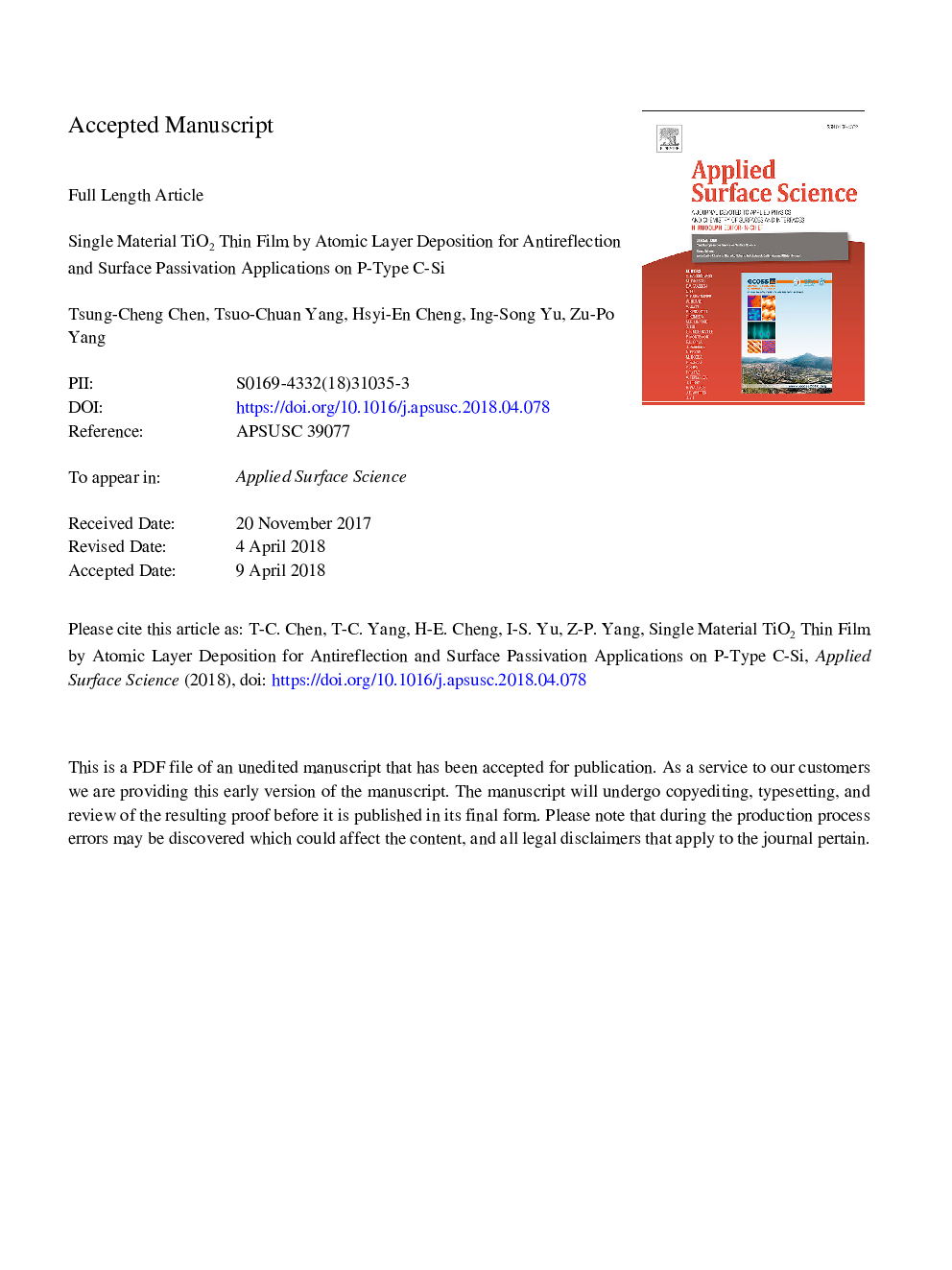| کد مقاله | کد نشریه | سال انتشار | مقاله انگلیسی | نسخه تمام متن |
|---|---|---|---|---|
| 7833445 | 1503521 | 2018 | 24 صفحه PDF | دانلود رایگان |
عنوان انگلیسی مقاله ISI
Single material TiO2 thin film by atomic layer deposition for antireflection and surface passivation applications on p-type c-Si
دانلود مقاله + سفارش ترجمه
دانلود مقاله ISI انگلیسی
رایگان برای ایرانیان
کلمات کلیدی
موضوعات مرتبط
مهندسی و علوم پایه
شیمی
شیمی تئوریک و عملی
پیش نمایش صفحه اول مقاله

چکیده انگلیسی
A thin film deposited on the front surface of solar cell plays an important role in reducing the reflection of incident light and providing surface passivation. Although ultrathin TiO2 films have shown excellent performance of surface passivation, simultaneously serving both functions is hindered by the crystallization issue, which can degrade the passivation quality of TiO2 film, as the film thickness is over certain value (few nanometer only). Here we showed that both functions can be satisfied by single material of titanium oxide film through atomic layer deposition at low temperatures. By varying deposition temperatures from 80 to 200â¯Â°C, the TiO2 film deposited at 80â¯Â°C can maintain its amorphous phase up to the thickness of 114â¯nm. In addition, the optimal thickness for antireflection calculated by OPAL 2 is 61â¯nm, meaning that amorphous TiO2 film to provide antireflection and surface passivation can be achieved. The passivation quality is verified by minority carrier lifetime measurement using photo-conductance decay method and presented the ultralow surface recombination velocity of 8.7â¯cm/s. Furthermore, the passivation mechanism is investigated by X-ray diffraction (XRD) and secondary ion mass spectroscopy (SIMS), in which the absence of crystalline issue is confirm and both chemical passivation (due to H termination) and field effect passivation (due to residual Cl atoms) are associated with the improvement of passivation quality. A post deposition anneal is conducted on the TiO2 film deposited at 80â¯Â°C. The results present that extra thermal budgets can ruin the passivation quality, which is explicated by the TiO2 crystallization as the temperature exceeding 350â¯Â°C from the XRD measurements, and by the descending of Cl atom (also field effect passivation) as increasing of the annealing temperature from the SIMS measurements.
ناشر
Database: Elsevier - ScienceDirect (ساینس دایرکت)
Journal: Applied Surface Science - Volume 451, 1 September 2018, Pages 121-127
Journal: Applied Surface Science - Volume 451, 1 September 2018, Pages 121-127
نویسندگان
Tsung-Cheng Chen, Tsuo-Chuan Yang, Hsyi-En Cheng, Ing-Song Yu, Zu-Po Yang,